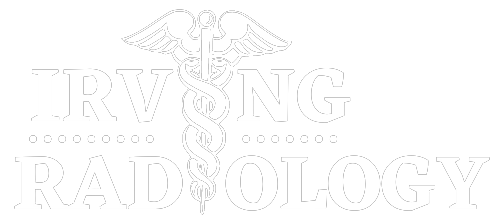Introduction– Teleradiology

It refers to the observation of a radiotherapist converting medical pictures into physical copies within the location wherever the photographs are generated. Hospitals, mobile imaging firms, imperative care facilities, and even some personal practices utilize it. The basic plan behind its invention is that it’s too expensive to use a radiotherapist on the site. You will be amazed to know the prices. Usually, the price starts at concerning $1,500 per day. On the other hand, having a teleradiology service allows you to pay on a per examination basis, and typically the price is as low as $8 per examination. For facilities requiring 24/7 services, or those who have a little volume of radiology patients, it will give high savings.
It permits underserviced hospitals to own timely access to a radiotherapist, who functions like being on the scene. With the event of Picture Archive and Communication Systems (PACS) and enterprise communication, it is currently a full part of the radiotherapist life and may take multiple forms:
- Reporting from home for decision coverage has improved the radiotherapist’s expertise, saving time to the hospital.
- Large radiology teams are performing regularly teleradiology habitually not solely to hide calls however additionally to perform subspecialty news.
- As services are obtainable by teleradiology firms, beginning with emergency services, however increasing to subspecialty reads and day coverage. These firms have used time zones for remote reading, having board-certified radiologists based mostly in different continents to produce night coverage once it’s regular business hours for these radiologists
Teleradiology may be a growing field for a variety of reasons:
- Increasing demand and acceptance
- Increasing emergency department volumes
- Increasing pressure for final reads and not preliminary anymore
- Local teams causing the overflow to teleradiology instead of recruiting new radiologists.
- The increasing quantity of subspecialty news.
History of Teleradiology–

It encompasses a history of virtually 0.5 a century now and has been authoritative in informing the complete telemedicine business. The thought of sharing information through the use of wire transmission was 1st developed nearly one hundred fifty years ago. Since that point, a similar technique has been applied and been instrumental in telemedicine’s evolution, that is that the observation of mistreatment of doctors that don’t seem to be within the same place because of the patient.
Throughout the 1930s, the ocean liner Queen marine used radiotelephone on the ship for the medical consultation. A doctor on board would send info to external sources for a consultation so function as an advisor for people on different ships who required medical attention.
During the 1960s and 1970s, there was intensive experimentation and analysis conducted to enhance the techniques of broadcast tv and closed circuits for causing medical pictures that had been captured by x-rays. Generally, the photographs pertained to pathology, medical specialty, and radiology. There was a brand new breakthrough once Dr. Kenneth Bird from Boston’s Massachusetts General Hospital was able to have Associate in Nursing interactive telecommunication equipment put in that connected mountain peak aerodrome with the hospital and will be used for providing travelers with medical treatment.
Throughout the early 1980s existed primarily as physical film copies that were mailed to the radiotherapist. Then he would record a report on a mag tape. This would be then be mailed to the initial facility so it can be transcribed into the shape of a paper report. These studies’ turnaround would take days and typically even weeks. For routine studies that will work, however that timeframe won’t cut it in emergency things.
During the late 1990s, there have been many pure teleradiology firms that had been established and were turning into terribly productive. Radlinx, Nighthawk, and vRad were a number of the field’s early pioneers. Nighthawk is an Associate in the Nursing particularly attention-grabbing case since it absolutely was the primary company that had radiologists in Australia and Europe to maximize the zone variations with the U.S. A doctor in Australia operating within the afternoon may cowl a burying ground shift within the U.S.
Future of Teleradiology–

Models and observations: The practices are varied and various, and also the future will contain all probability bringing additional distinctive practices and models. There is a minimum of six general models of teleradiology practices: solo professional person, standalone observe, long services, overread services, international services, or a hybrid combination of those with “bricks and mortar” teams consolidating, similar things are possible to happen with its services as teams merge to grow volume and coverage areas.
These can in all probability become the dominant players within the market because the technologies and platforms become omnipresent and also the “culture” of medical practitioner acceptance of remote reading matures.
It is vital here to handle a developing observe model that I think can have vital implications within the way forward for teleradiology. Thanks to the large disparities in salaries between the private-practice domain and tutorial medical centers, there has been a mass exodus of educational clinicians from the ranks of radiology departments nationwide. This has left departments troubled to keep up staffing with ever-growing workloads superimposed on ever-growing tutorial pressures to publish.
It might shift a number of the balance back to the schooling medical centers by permitting hybridized academic practices. Innovative practices are often organized during which the radiotherapist practices part-time in a very nonteaching clinical role and part-time in a very teaching role. The academician will give subspecialty overreads throughout daytime hours. massive tutorial centers will serve to more combination experience for troublesome or uncommon cases.
- The immediate profit to the hospital systems is that patient referral might increase.
- The secondary profit is that it brings massive case sets for retrospective studies and facilitates the tutorial mission of the establishment.
Summary:
So, in short, Teleradiology can be considered as telemedicine where you can use telecommunication to transmit medical images/pictures from one place to another. Eg- Digitized x-rays, MRI, CT scans, ultrasounds, and medical x-rays.
In this blog what we were discussing is the “keystones” of teleradiology, specifically technical service, QoS, accumulation issues, and economic aspects of the observation.

